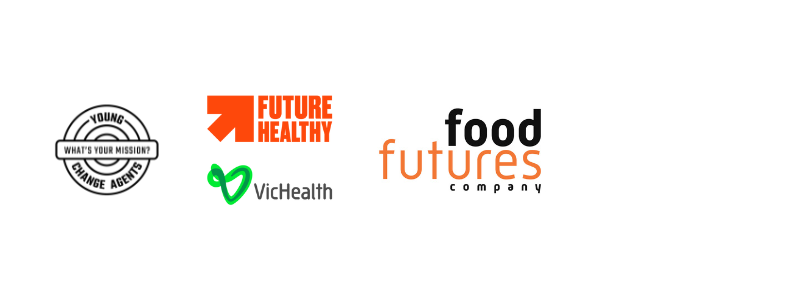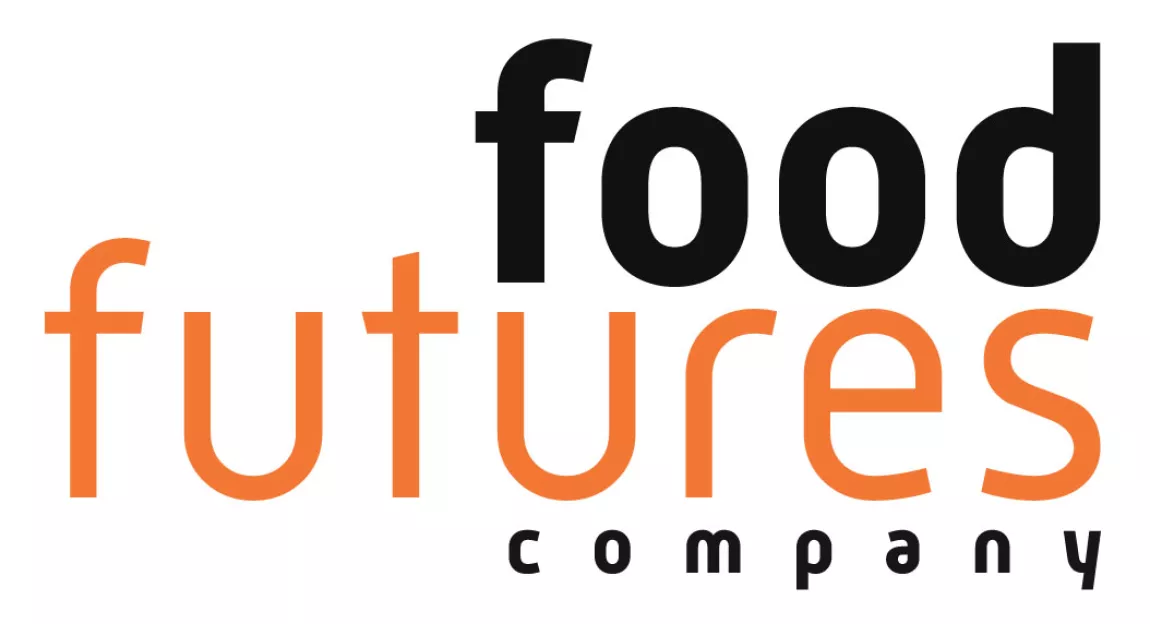The Future of Food Youth Design Challenge will be available for delivery in Terms 1 & 2 in 2024. Sign up now to receive the resources.
OPEN NOW. RUNS TERM 1 & 2!
The choices we make about what we eat affect not only our wellbeing but also the health of our planet. As the world's population continues to grow, and as climate change disrupts traditional agricultural practices, we must develop sustainable and resilient food systems to ensure everyone has access to nutritious and affordable food.
The Future of Food Youth Challenge aims to:
- Increase understanding of sustainable food production, healthy and accessible consumption and reduced waste.
- Increase opportunities to support food producers and distributors
- Increase community capacity to address emerging food issues
- Explore ways to make meaningful connections through food
- Develop technology-driven solutions to improve the efficiency and sustainability of food production, distribution, and consumption.
- Blend traditions and practices into our food systems to strengthen our connection to culture through sustainable food production and consumption
That's why between the 1st of January to the 30th of June 2024, we will be challenging young people aged 10-21 across Australia to ideate solutions to:
"How might we reimagine the Future of Food?"
As part of this challenge, we're asking young people to focus on one of six key themes:
- Food and Health: How might we provide healthier options and better access to healthy food?
- Connection and Joy through Food: How might we use food to create connection and joy in our lives?
- Food Sustainability: How might we make sure there's enough healthy food for the future by making food production and consumption more sustainable?
- Food and Technology: How might we utilise technology to encourage and enable healthy food futures for all Australians?
- Regional and Rural Food Growth and Production: How might we improve the lives of farming families & communities?
- Native Food & Agriculture: How might we integrate culture and traditional practices into our food systems to encourage connection to culture through sustainable production & consumption?
First Nations Lens
In partnership with Food Futures, Young Change Agents has also released a First Nations Lens to this challenge. This is a version of the program available for classrooms with a majority of First Nations students, which has a focus on Indigenous foods and Agriculture, connection to Culture and Care for Country.
Once signed up you can access both lenses of the challenge resources.
See below for all the Challenge Details! We will be adding our special guest Judges for this Challenge shortly!
The Future of Food is in partnership with:

Challenge Details
- What is the challenge?
-
The Future of Food Youth Design Challenge is a free design thinking challenge that asks youth to consider food problems from their own lived experience (and others around them) and reframe challenges as opportunities to make a difference using social entrepreneurship. The challenge will see youth define key problems, ask "how might we" questions, develop solutions and create prototypes. Young people aged 10-21 will also be able to enter the challenge and be in the draw to win prizes to help them develop their ideas further.
- Why is this important now?
-
With the global population on the rise and traditional farming methods being affected by climate change, it becomes imperative to establish food systems that are both sustainable and strong, guaranteeing affordable, equitable and nourishing food access for all.
Through this challenge, young people will have the opportunity to ideate sustainable and practical solutions for how they can approach the Future of Food in 2024 and beyond.
- Categories and Judging
-
There are two entry categories:
- Junior Category: 10-13-year-olds (3 winners will be chosen)
- Senior Category: 14-21-year-olds (3 winners will be chosen)
All of our entrants will receive feedback, and the top 20 ideas will be shortlisted and taken to our judging panel. Winning ideas will be selected from the pool of the top 20 finalist ideas.
Three winners from each category will be chosen by our judging panel.
Entries close on June 30th 2024.
Winners will be announced in late July 2024.
- Prizes
-
All finalists will receive a Future of Food Design Challenge Finalist certificate.
Winners from the Junior and Senior Category will receive:
- A Future of Food Youth Design Challenge certificate; and
- A Young Change Agents prize pack.
Winners will also receive:
- 2 x virtual mentoring sessions to help take the idea to the next stage
FAQs
- How do I participate?
-
Youth: You can do this challenge independently, with a friend, in a team, or with your siblings! Just download the resources, do the challenge, and submit a project page!
Educators & Parents: If you'd like your students or children to participate in this challenge, please download the resources via the signup form. You will receive access to all of the resources you need to run the challenge with your students or children. You can submit a project page on behalf of your students or children, or they can do it themselves. Instructions for entering the challenge can be found in the resources.
All challenge entries must be submitted by the challenge close date: Monday 1st July 2024
-
All ideas submitted before the close date will receive feedback from the Young Change Agents team.
- Who can enter?
-
Anyone aged 10-21 years old can enter and participate in this challenge.
- Who are Young Change Agents?
-
Young Change Agents is a not-for-profit social enterprise that empowers young people across Australia to find problems in their community, reframe them as opportunities, and then come up with solutions.
How is the challenge structured?
- 1. Choose one of the challenge areas
-
You need to choose one of the following themes to focus on:
Food and Health: How might we provide better options and better access to healthy food?
Connection and Joy Through Food: How might we use food to create connection and joy in our lives?
Food Sustainability: How might we make sure there's enough healthy food for the future by making food production and consumption more sustainable?
Food and Technology: How might we utilise technology to encourage and enable healthy food futures for all Australians?
Regional and Rural Food Growth and Production: How might we improve the lives of farming families & communities?
Native Food & Agriculture: How might we integrate culture and traditional practices into our food systems to encourage connection to culture through sustainable production & consumption?
Now that you’ve chosen, it’s time to start the design challenge!
- 2. Explore the problem and dig deeper using empathy interviews
-
You want to start by deep diving into the challenge you’ve chosen. You may want to look at some of the additional resources to get a better understanding of the topic you’ve chosen.
Then, it’s time to find someone you can interview about the challenge. These interviews are known as “empathy interviews” as you start to learn more about the problem by empathising with the person you are interviewing and understanding some of the challenges they face.
So, find a partner and ask them to tell you about this problem and how it affects them. We have sample questions for each of the chosen themes but please feel free to ask your own as well.
Make sure to dig deeper as your partner answers by asking “why”!
To create a solution that will have a positive impact you need to think about who is being affected by the problem. Whilst we are all impacted by issues in the long run it’s important to be specific. Is it young people like you? Is it children in primary school? Maybe it's young adults? Try and figure out who you want to help!
Make sure you take plenty of notes as you interview your partner. Keep your notes from these interviews and it will be useful for the customer/user section of your submission!
- 3. Define your problem
-
From your empathy interviews, you will get interesting insights about some problems this person might have in helping to be part of the solution. Take a look through your notes and circle all of the problems or challenges you found in your empathy interviews.
Now pick the most important one. This problem should also feel exciting for you to solve.
- 4. Reframe your problem
-
Now that you have identified the problem you are going to solve, it’s time to reframe that as an opportunity.
We want to reframe this so that we’re not thinking about this as a negative but rather, as an opportunity to be creative and innovative problem solvers! We do this by using a simple tool called a “How Might We” statement.
The trick with How Might We statements is to ensure they don’t include the solution in them. This limits our thinking.
- 5. Ideation
-
Now you have your opportunity, it is time to be creative and come up with ideas!
- Get a notebook, post-its or some coloured paper and come up with as many ideas as you can.
- Imagine you have one million dollars and you can do anything you want. Imagine you had to use tech to do it. Then imagine you had no access to tech..what would you do?
- Push yourself to come up with at least ten different ideas. Then take a break and try and come up with even more!
- Think about the audience you chose and how you could best help them.
Once you’ve got a lot of ideas, choose the one you think would best solve your opportunity. This is your solution.
Remember there’s no such thing as a bad idea!
- 6. Test the solution you have designed
-
Before you share your ideas or spend time building something, it’s a good idea to test and improve your ideas. This process is called validation. This could be done by talking to your parents about what you have created and asking for some feedback. You could even consult the target group you are trying to help (this may not work if you are helping animals), but you can make it even better as you get more feedback on your idea. Don’t forget to try and avoid close contact with people and use the internet and the phone where possible.
Another great way to test is to create a prototype - this is a draft version of your idea. You can do this by drawing what your idea would look like, creating a mini-version, building something out of recycled materials, or creating a plan of what the idea could look like. You can then show your prototype to potential users and ask for their feedback.
- 7. Share!
-
Now that you’ve got an idea, we want to hear all about it!
Click ‘Enter your idea’ at the top of this page to submit your idea.
Keep in mind we’ll ask you for a logo and a picture of your solution. This could be of your brainstorming, a picture of what your idea would look like, a poster promoting your idea or something else that is a visual representation of your idea.
- By submitting your idea via the Young Change Agents website, you'll automatically be entered into the challenge and you can also be notified of other opportunities that may help support your idea in the future.
Additional Resources
For Youth
Ready to take on the challenge and come up with creative ideas for our Future of Food Youth Design Challenge. Do you have an idea that you think could change the world?
Sign up for the challenge, share your idea, and have the chance to get the support you need to make your idea a reality!
For Educators
To get access to all the resources you need to run this challenge, including worksheets, curriculum links, slides, and other activities, sign up!
If you're interested in Young Change Agents running a facilitated challenge for your students, please get in touch or book a workshop with us via the Contact page.
For Parents (of Under 18 Entrants)
Our Future of Food Youth Design Challenge is a great activity to build your children's confidence, and resilience and encourages them to view problems as opportunities. We provide you with all the resources you need to run this challenge with your children, including instructions on running the activities, submitting an entry, and additional resources.
This challenge is great for parents of creative and curious children who need an engaging and hands-on activity to build their entrepreneurial mindset, skillset, and toolset.

